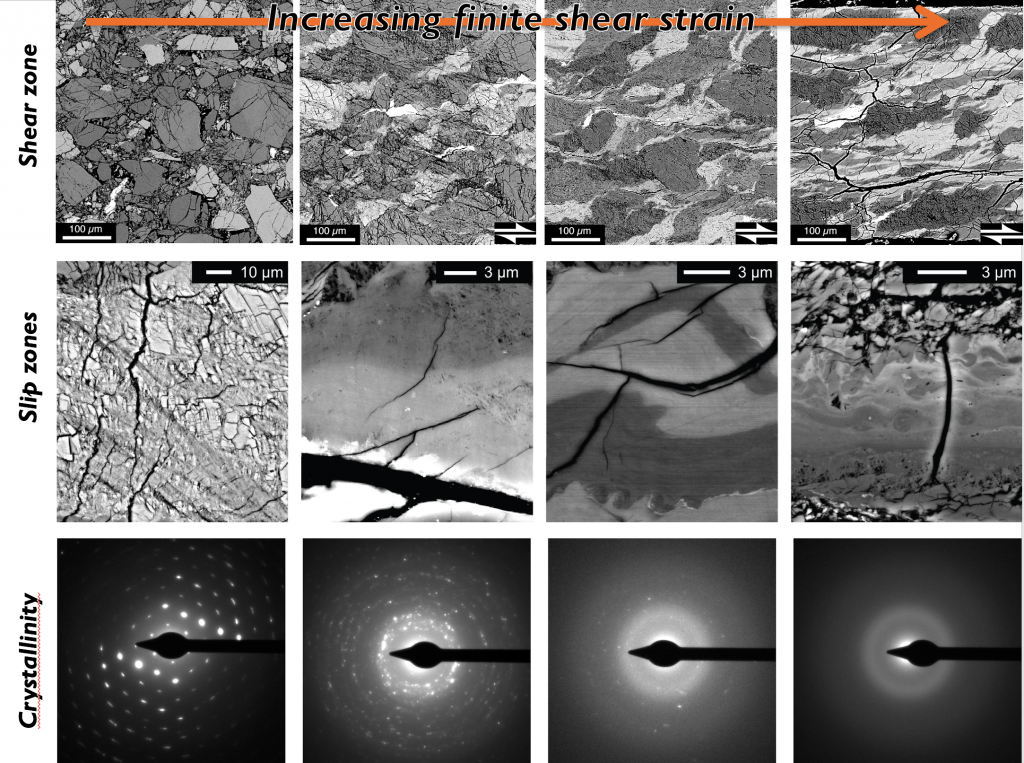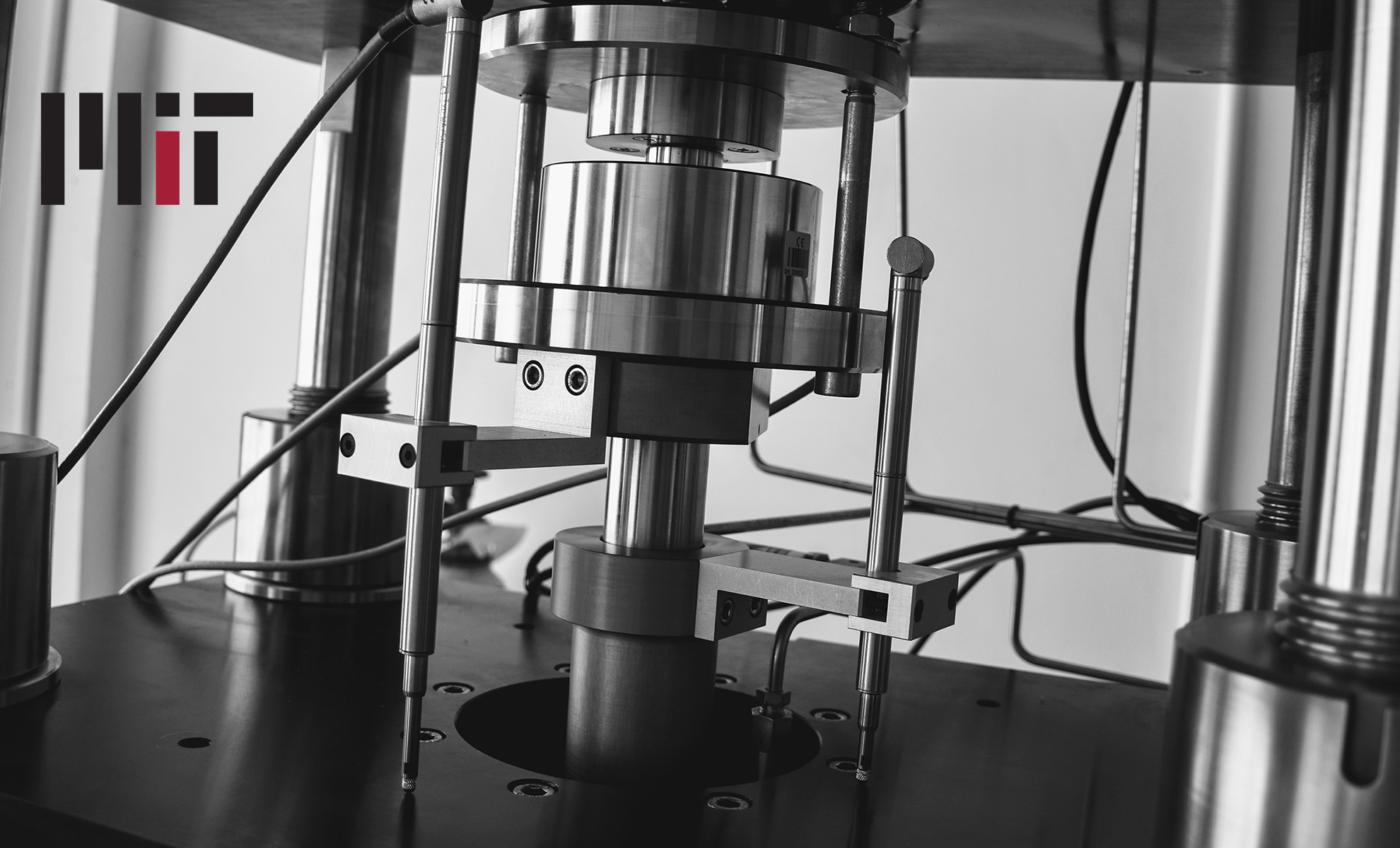
Strain localization into fine grained zones is ubiquitous. What is the minimal grain size rocks can achieve? Improvements in resolution of electron microscopes and advances in sample preparation have lead to the discovery that nanocrystalline and amorphous materials are abundant in both nature as well as experiments under a broad range of conditions. Nano-crystalline materials are surface-dominated, i.e. more atoms form the surface than the interior of a grain, and their rheological behavior is distinct from micro-crystalline materials which are volume dominated, i.e. most atoms form the interior of a grain. Amorphous materials do not have any grain size per-se as coherent zones of long range order (i.e. crystallinity) are absent. Understanding the rheological behavior of nano-crystalline and amorphous materials in the context of faults offers new insights into mechanisms which can lead to rapid strain transients that can cause earthquakes.

Pec, M., Al Nasser, S. (2021) Formation of Nanocrystalline and Amorphous Materials Causes Parallel Brittle‐viscous Flow of Crustal Rocks:Experiments on Quartz – Feldspar Aggregates Journal of Geophysical Research, doi: 10.1029/2020JB021262
Pec, M., Stünitz, H., Heilbronner, R., Drury, M.R., De Capitani, C., (2012).
Origin of pseudotachylites in slow creep experiments
Earth and Planetary Science Letters, 355-356, 299-310
Boutareaud, S., Hirose, T., Andréani, M., Pec, M., Calugaru, D-G., Boullier, A-M., Doan, M-L. (2012).
On the role of phyllosilicates on fault lubrication: Insight from micro- and nanostructural investigations on talc friction experiments
Journal of Geophysical Research, 117, B08408
